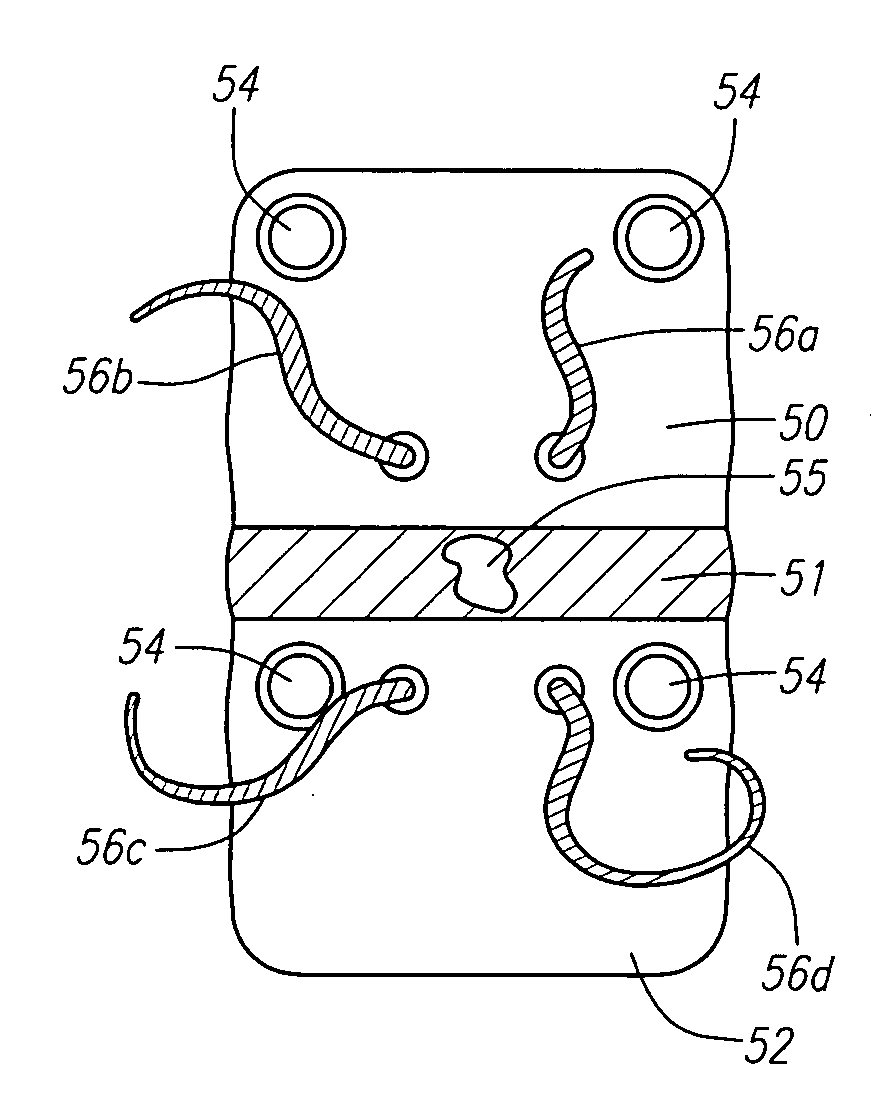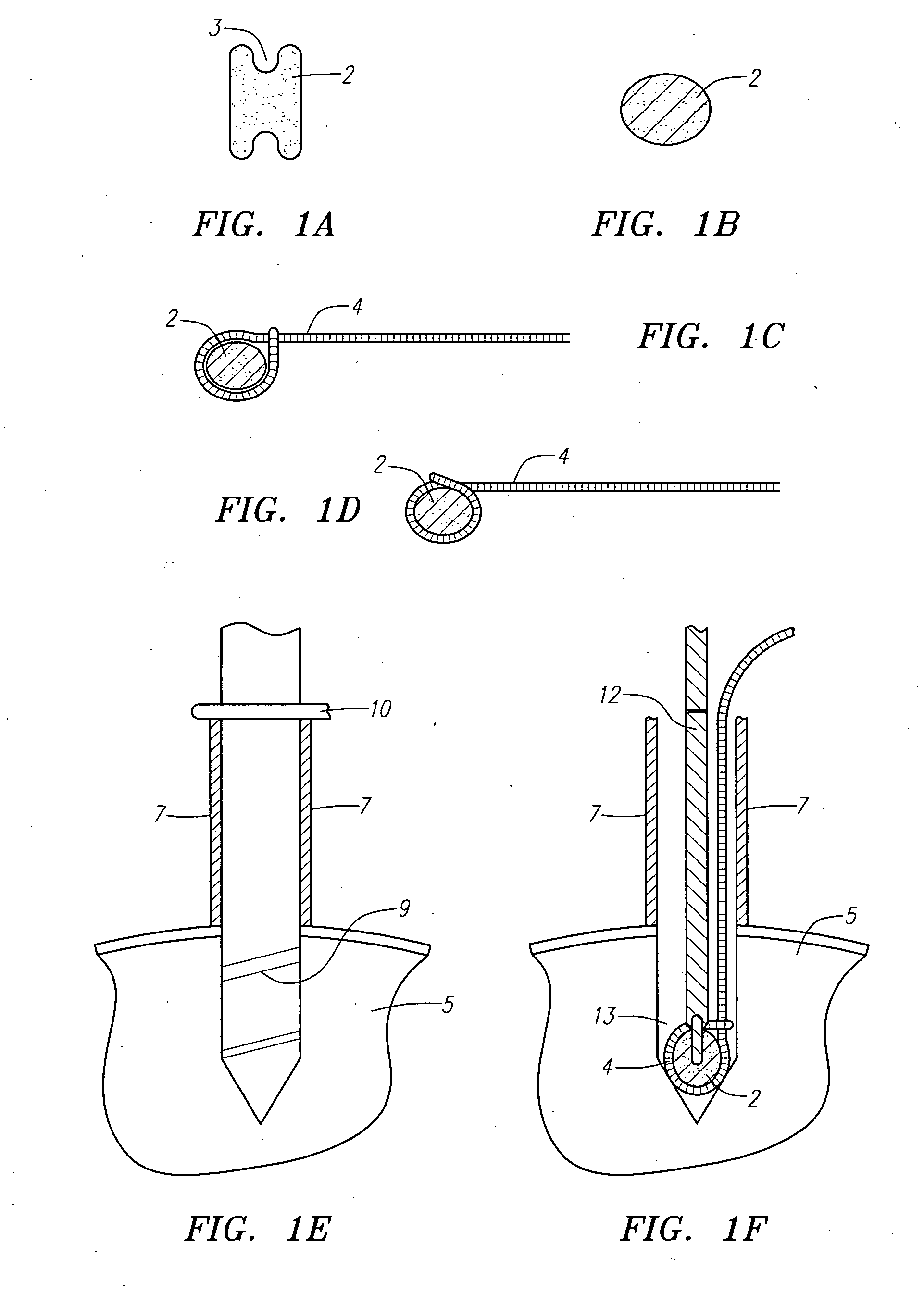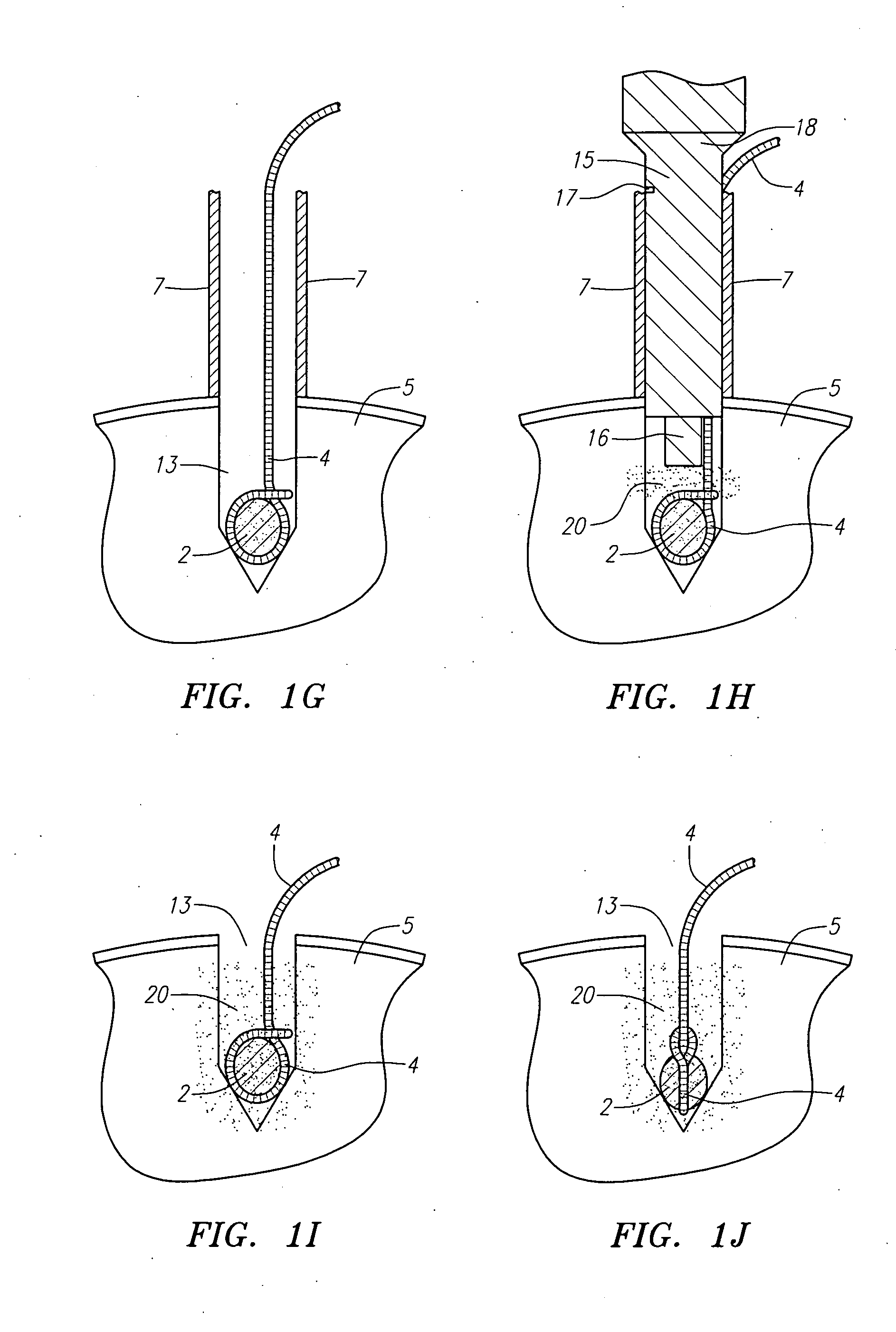Sutures for use in the repair of defects in the anulus fibrosus
a technology of annular fibers and sutures, which is applied in the field of sutures for use in the repair of annular fiber defects, can solve the problems of reduced treatment effect of disc degeneration, so as to facilitate the healing of the anterior longitudinal ligament and facilitate the anterior longitudinal ligament. , the effect of facilitating the healing of the posterior longitudinal ligamen
- Summary
- Abstract
- Description
- Claims
- Application Information
AI Technical Summary
Benefits of technology
Problems solved by technology
Method used
Image
Examples
Embodiment Construction
[0063]FIG. 1A is an anterior view of one embodiment of the invention. Device 2 is a spool having indentation 3 adapted for placement of a suture around the spool such that the suture fits at least partially within the indentation. Indentation 3 aids in keeping the suture looped around spool 2. Device 2 may be made of metal such as Titanium, plastic such as polyethylene or PEEK, bioresorbable materials, or cured cement such as PMMA. Suitable bio-resorbable materials include polylactic acid (PLA), polyglycolic acid (PGA), poly (ortho esters), poly(glycolide-co-trimethylene carbonate), poly-L-lactide-co-6-caprolactone, polyanhydrides, poly-n-dioxanone, and poly(PHB-hydroxyvaleric acid), FIG. 1B is a lateral view of spool 2. FIG. 1C is a lateral view of spool 2 and suture 4 looped around spool 2. FIG. 1D is a lateral view of the embodiment of the invention drawn in FIG. 1C. Suture 4 has been tightened around spool 2.
[0064]FIG. 1E is a sagittal cross section of a portion of bone 5, dril...
PUM
| Property | Measurement | Unit |
|---|---|---|
| water content | aaaaa | aaaaa |
| water content | aaaaa | aaaaa |
| water content | aaaaa | aaaaa |
Abstract
Description
Claims
Application Information
 Login to View More
Login to View More - R&D
- Intellectual Property
- Life Sciences
- Materials
- Tech Scout
- Unparalleled Data Quality
- Higher Quality Content
- 60% Fewer Hallucinations
Browse by: Latest US Patents, China's latest patents, Technical Efficacy Thesaurus, Application Domain, Technology Topic, Popular Technical Reports.
© 2025 PatSnap. All rights reserved.Legal|Privacy policy|Modern Slavery Act Transparency Statement|Sitemap|About US| Contact US: help@patsnap.com



